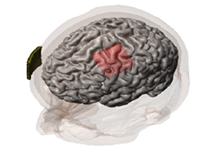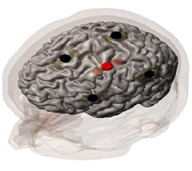Problem Statement
Can individuals with intractable types of seizures find relief where drugs and surgery have not worked for them?
Since 2005, BCISim’s research and development team has worked on seizure prediction methodologies to improve the current ‘state of the art’ neuro-implant devices that have not provided total relief for those who suffer from debilitating seizure effects.
Current implants alleviate only a fraction of seizure occurrences, leaving the individual to manually increase the voltage in their brain implant as the seizure is occurring. By this time, the individual has suffered from the initial seizure event, and has also suffered several side effects. These side effects include trouble breathing, talking, shortness of breath, strained vocal chords, etc.
We have developed a better way to help these individuals through our approach. Our methods include finding the small, local area in the individual’s brain where initial seizure activity is measured. As this area grows and begins to take over the individual’s brain, we short-circuit this activity by sending a small electrical stimulation to the individual’s brain, thereby stopping the train of seizure pathologies.
This approach has proven to not only stop the oncoming seizure effect, but cause the individual to feel no discomfort during this procedure. The individual would never know that a seizure was about to occur, and begin to live a normal life.

Conventional C3-SO
In order to achieve the intended electrical stimulation effects, the orientation of the electric field of the stimulated neuronal population is determined, which is defined generally by the electrodes’ positions and polarity.
HD-tDCS (M1-Centered)
The 4x1 HD-tDCS deployment on the head produces an X configuration. The one in the center pushes current in the desired direction and the four around it siphon off excess current that would otherwise spread and activate wider brain areas.